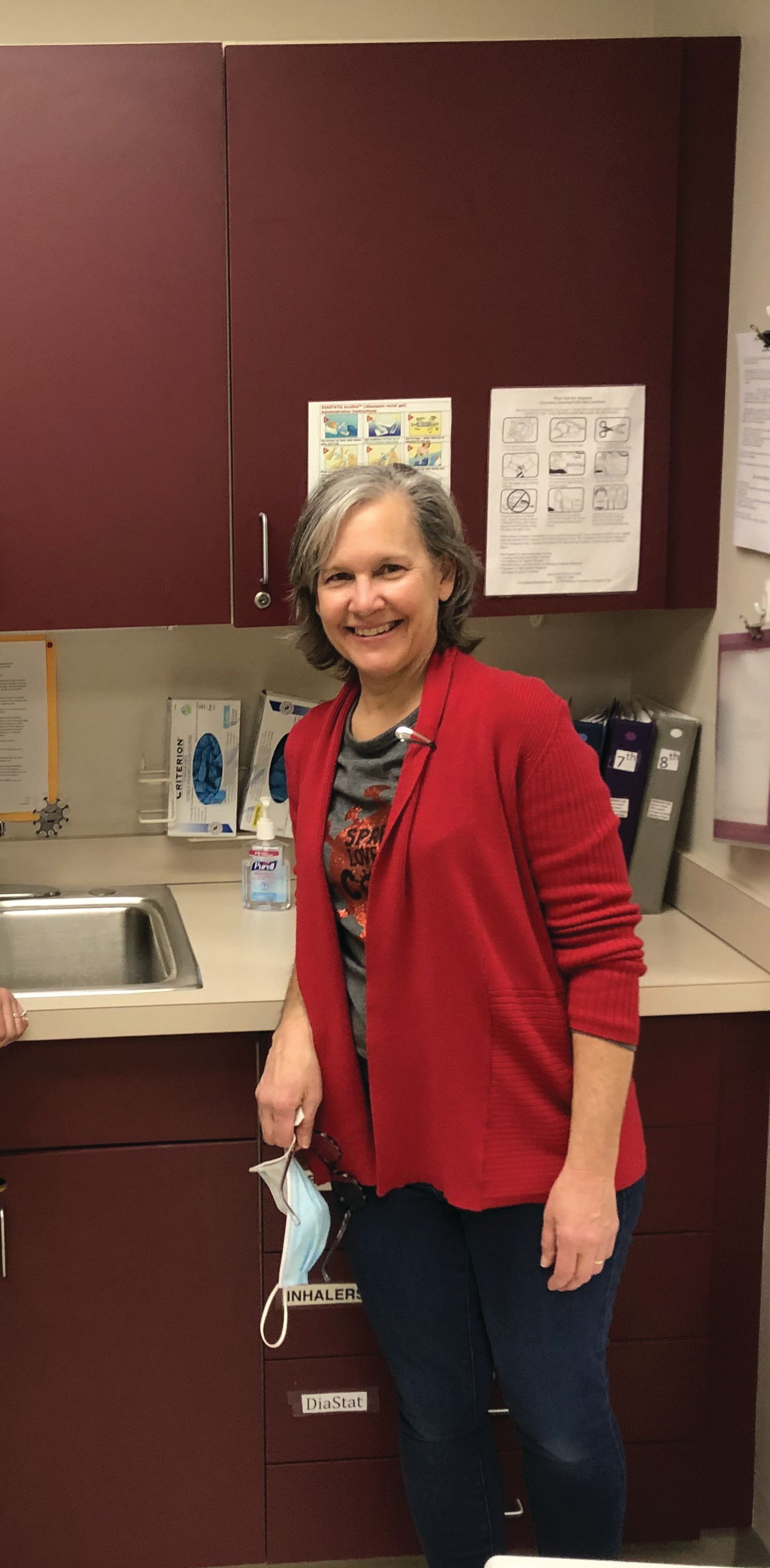Celebrating Women in Pharmacy
Through her work at the Centre Volunteers in Medicine, my wife—now retired—has made an impact on more people than I ever will.
In 2014, a woman named Kristi came to the pharmacy that my wife, Denise, was staffing, located in a major hospital outpatient clinic. She asked if Denise knew of anyone who might be interested in a position at the Centre Volunteers in Medicine (CVIM) in State College, Pennsylvania, working as a clinical pharmacist. Kristi had gotten a grant that would fund a pharmacist for 12 hours per week. Denise asked several pharmacists, all of whom politely declined, as the salary was not adequate.
About a week later, Denise asked me if she should apply for that CVIM pharmacist position. The salary was lower, and she would lose the health system’s benefits. I told her I would love to see her assume that position and chart her own course. At the time I was working 2 days a week on the bench and 2 days a week with Dr Zane Gates, an internal medicine physician in Altoona, Pennsylvania, as well as teaching at Saint Francis University.
Denise Kreckel

Our kids had all graduated from college, and the money was not an issue. Denise’s only concern was her clinic skills. But Denise had helped me create some of my Saint Francis pharmacology lectures—frequently attending on Thursday mornings. My students in class referred to her as “the homeroom mother”; she always brought snacks and treat bags for holidays. I told her that I felt no one was more prepared to handle such a new assignment.
Denise took the job and quickly turned the medication room on its head. She started getting free medications from the Americares and Direct Relief organizations, and helped patients enroll in manufacturer programs. She helped her patients get their much-needed medications—medications that many insured patients can’t obtain. She also educated the volunteer physicians as well as the residents. When I would go to that small little clinic, I stood in awe of what my wife accomplished.
Then COVID-19 hit. When the CVIM staff decided to administer COVID-19 vaccinations, they hit a brick wall. Denise guided them through all of the health department requirements, and they began vaccine administration in their small, cramped clinic. In fact, the first COVID-19 shot that I ever drew up was under Denise’s watchful eye. Later, the health department had CVIM use the Pfizer-BioNTech vaccine—around 1200 vaccinations per tray. The amazing staff there did all the ancillary work getting volunteers, materials, and sign-ups. Denise handled the vaccine.
Denise would pull the vaccine out of the dry ice and transfer it to the freezer. We would pack the vaccine into the transport cooler and drive to State College at 5 AM on Saturday mornings. Denise would oversee the handling of every dose of vaccine; she organized the draw-up rooms while the other staff handled the volunteers who administered each dose. (I was relegated to the draw-up room.) Denise would orchestrate the administration of 2400 vaccines on many Saturdays: 1200 first doses and 1200 second doses.
In December 2021, we moved to Morgantown, West Virginia, to be nearer to our family. Denise left the CVIM pharmacy into the capable hands of Eleanor Bird, a seasoned community pharmacist. We love living next door to our 2 beautiful grandkids, but Denise still has a warm spot in her heart for CVIM.
On September 6, 2023, we attended the dedication of the new CVIM building. The clinic that at one time occupied a 6700-square-foot space now is in a beautiful 11,000-square-foot building with plenty of parking.1 At one point, some employees said that the COVID-19 vaccine clinics really “put CVIM on the map.” We were also told that many of the recipients of COVID-19 shots at those Saturday clinics became big contributors to the new building. I stood in awe at this dedication, surrounded by some of Penn State’s biggest names, many of whom contributed to this massive effort to take care of the uninsured and most needy citizens of Central Pennsylvania. I toured the pharmacy and saw the massive inventory available to provide services to these patients; their inventory was 3 times the size of most community pharmacies. (I doubt your pharmacy has 9 Breo Ellipta inhalers on the shelf!)
Names like Kristi, Cheryl, Becky, Katie, Emma, Eleanor, and Denise were instrumental in making CVIM a most awesome experience for these most needy patients. All of these women worked together with a common dream to make this possible; not a single man is involved in the daily operations of this ultramodern clinic. It reminds me of my tough old German neighbor lady, Marie, when I was growing up. Fifty years ago, during the 1970s, my mom asked Marie what she thought of the women’s liberation movement. Marie responded, “Being equal to a man? I would never lower myself.”
I write for Drug Topics, lecture for 2 different live continuing education platforms, and have a wall full of recognition awards in my office. My wife, now retired, has made an impact on more people than I ever will. This column is not a tribute to my wife, but rather to all the women pharmacists who every day make a difference in the lives of their patients through their compassionate care. My neighbor was right: I have a long way to go to be equal to my wife and a whole host of other women pharmacists.
Happy American Pharmacists Month!
Peter A. Kreckel, RPh, practices community pharmacy in Altoona, Pennsylvania.
Reference
1. Rushton G. CVIM opens new clinic. Statecollege.com. May 30, 2023. Accessed September 11, 2023. https://www.statecollege.com/articles/ community/cvim-opens-new-clinic/
